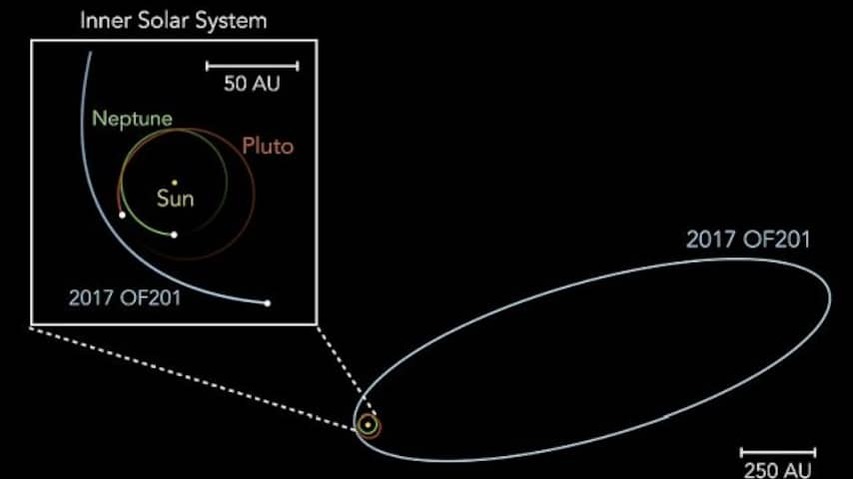Scientists have discovered a new dwarf planet in our solar system. Far beyond Pluto, 2017 OF201 also orbits the sun in a (huge) orbit. The discovery makes it much less likely that a mysterious ninth planet exists in our solar system.
2017 OF201 is actually a piece of rock with a diameter of 700 kilometers. That makes it just large enough to be considered a dwarf planet, but far too small to be a planet. For comparison: Pluto has a diameter of almost 2,400 kilometers, and the Earth of about 13,000 kilometers.
The dwarf planet 2017 OF201 takes a total of about 25,000 years for a complete orbit around the sun. The Earth does that in a year. The orbit around the sun of the dwarf planet has the shape of an elongated ellipse (see the picture at the bottom of this article).
At its furthest, 2017 OF201 is sixteen hundred times as far from the sun as the Earth on average. That puts the dwarf planet at the edge of our solar system. It is definitely part of the solar system, because it clearly moves around the sun, says lead researcher Sihao Cheng.
The existence of the dwarf planet has been confirmed by the International Astronomical Union (IAU). The discovery took a long time because the dwarf planet is so far from Earth. “2017 OF201 is only close enough for us to see it 1 percent of the time. There may be hundreds of other similar objects, but they are still too far away to see. Even though we can see very far with new telescopes, there is still much undiscovered in our own solar system,” says Cheng.
The discovery of 2017 OF201 seems to definitively mean the end of the existence of a ninth planet. Scientists have long wondered if there was a large, undiscovered planet in our solar system. That would explain why other planets and celestial bodies do not move completely as expected. The gravity of 2017 OF201 explains those deviations almost entirely, according to the astronomers.
